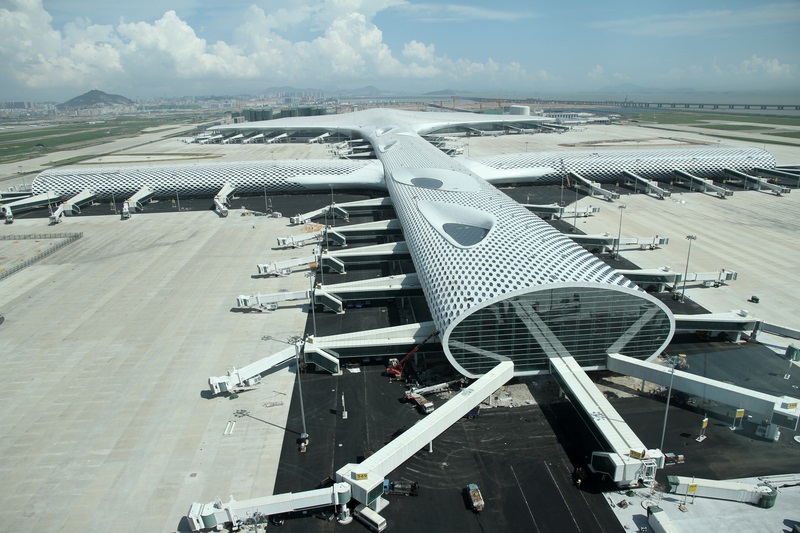
Just as the 9/11 terrorist attacks on the US in 2001 led to a step-change in security measures for the aviation industry, the current pandemic is driving rapid changes in the sector – notably in how passengers are processed as they pass through airports. As the aviation industry recovers in coming years, it will resume its long-term growth trajectory warranting more agile decision-making by airports.
To this end, mere traditional human intervention will no longer suffice. Developing and sustaining such agility will require the digital transformation of transport hubs. It would be prudent to note that emerging technologies such as 5G coverage, Artificial Intelligence (AI), Big Data and intelligent computing have become the cornerstones to achieving an effective digital transformation.
The container for much of this work is likely to be China, which is experiencing high aviation sector growth rates as the country’s burgeoning middle class use their new disposable income for leisure travel – both domestically and internationally.
China growth
In March 2020 IATA, the global body representing airlines, forecast China’s aviation growth for the 20 years from 2018 to 2038 as 5.3% annually - significantly higher than the global average growth of 3.8%. In 2019 alone, China’s domestic market grew at 7.8%, the fastest of all global domestic markets tracked by IATA.
Temporarily impeded by the pandemic, the growth of China’s airline sector has been among the fastest to recover worldwide and there seems no reason why the growth trend cannot return to predicted levels.
Demand for global spending on the digital transformation of the landside of airports is forecast to rise sharply from $3.9 billion in 2018 to $4.6 billion in 2023. Airside digital transformation is also likely to grow from $4.58 billion (2018) to $5.6 billion (2023), with the ‘Operations Management’ segment leading the growth.

(© Jasonguo1989 | Dreamstime.com)
Over the past two years one of China’s fast-growing airports, Shenzhen, has partnered with Huawei to deliver almost 100 projects to help transform its capabilities. The scope included the introduction of ‘smart’ operational models covering all aspects of operations, security and passenger services.
Shenzhen deep dive
The core of the operational model is the Intelligent Operation Centre (IOC), which serves as the brain of the entire airport. One measure of its performance is evident from the marked improvement for on-time departure rates, which on average exceeded 87% for 2019, climbing above 90% for three successive months in the final quarter.
The IOC, which can equally handle the complexity of managing a city, has four main responsibilities: decision-making, warning, governance and command.
It uses Big Data for data analytics and mining to present key indicators to airport management, essentially supporting their decision-making process. For example, the inherent business rules can be configured to detect and warn of potential risk scenarios in advance and prevent them from escalating to issues, incidents or major emergencies. This proves particularly useful on the airfield where, according to previous IATA Damage Reports, the majority of aircraft incidents occur.
The governance feature collects, processes, and monitors airport operations in a unified manner to improve collaborative efficiency, implement quick responses, optimise the management resources and improve governance.
Furthermore, in the event of a major incident or emergency, the command centre implements a unified command to coordinate the execution of action measures and allocation of resources across multiple departments
The deployment of such an IOC at Shenzhen Airport, which handled 52 million passengers in 2019, has heightened the level of intuition and situational awareness, making it the first in China to launch smart airport facilities. Such services include intelligent security check channels and airside stand allocation, where aircraft are assigned to individual jetways, the retractable bridges that link the terminal building to aircraft.
The efficient and timely allocation of aircraft to jetways is a major benefit for airports across operational, environmental and customer lines; every passenger can recall the frustrating experience of being parked at a remote stand after a lengthy flight.
Intelligent stand allocation
Despite being only a few hundred metres from the terminal building, there is invariably a delay before buses arrive to transport passengers to the airport terminal followed by further time-lags as individual buses are filled to capacity before moving off. This often leads to dissatisfaction among both passengers and customer airlines.
Shenzhen Airport began using the intelligent stand allocation system in late November 2019, constituting the first use of AI algorithms in China’s airports. Compared to manual stand allocation, the AI behind the new system slashes the duration required to assign Shenzhen’s 1,000-plus daily flights to gates from four hours to just one minute. Moreover, the schedule is updated and modified, if necessary, every 10 minutes ensuring an agile airport operation when faced with delays and irregular flight operations.

By deploying this system, Shenzhen Airport has greatly improved its jetway-to-airport docking rate. It has also increased the turnover rate of jetways between successive flights, enabling more passengers to embark and disembark more quickly and efficiently.
The need for greater agility in assigning gates to aircraft will grow as traffic recovers post-pandemic and the larger airliners (VLA) – Boeing 747s and Airbus A380s – are succeeded by smaller and more economical aircraft. This will require more frequent allocation of aircraft to available jetways.
Meanwhile, in the terminal building, Shenzhen and Huawei have introduced a series of measures to make the passenger journey touchpoints more seamless, contactless and efficient.
Digital transformation
Additionally, the airport leads the industry with full 5G coverage and multiple applications that make use of the technology. The enablement of next-generation smart airport services is powered by the strategic digital transformation partnership with Huawei, one which is likely to form the core strategy of the future civil aviation industry.
Shenzhen Airport’s transformation encompasses three areas in particular: customers (both passengers and airlines); data-driven business flows; and digital ecosystems.
With 30 projects already implemented and another 60-plus scheduled for the second phase of the development programme, the airport is fast becoming increasingly ‘intelligent’.
In the near future, the airport and Huawei will launch a series of joint innovation projects which aim to leverage the working model already in place and embark on the next tier of the smart airport concept.
Increasing the intuition of airports will help in creating more flexible and adaptable spaces, and reduce the concentration of people. Such spaces include security areas where they will re-examine if screening really needs to take place in one area.
Could some of it be outsourced so that screening is performed before passengers arrive at the airport? The US government’s CLEAR system is a case in point where an external organisation is contracted to perform a number of security services such as background screening of individuals at over 30 airports.
The evolving partnership between Shenzhen Airport and Huawei aims to capitalise on the latter’s depth of resources and proven technology solutions for digital transformation. These will be used to expand Shenzhen’s smart airport ecosystem capabilities and further enhance its services - and ultimately improve its competitive standing.
For more information click here
Content produced in association with Huawei











